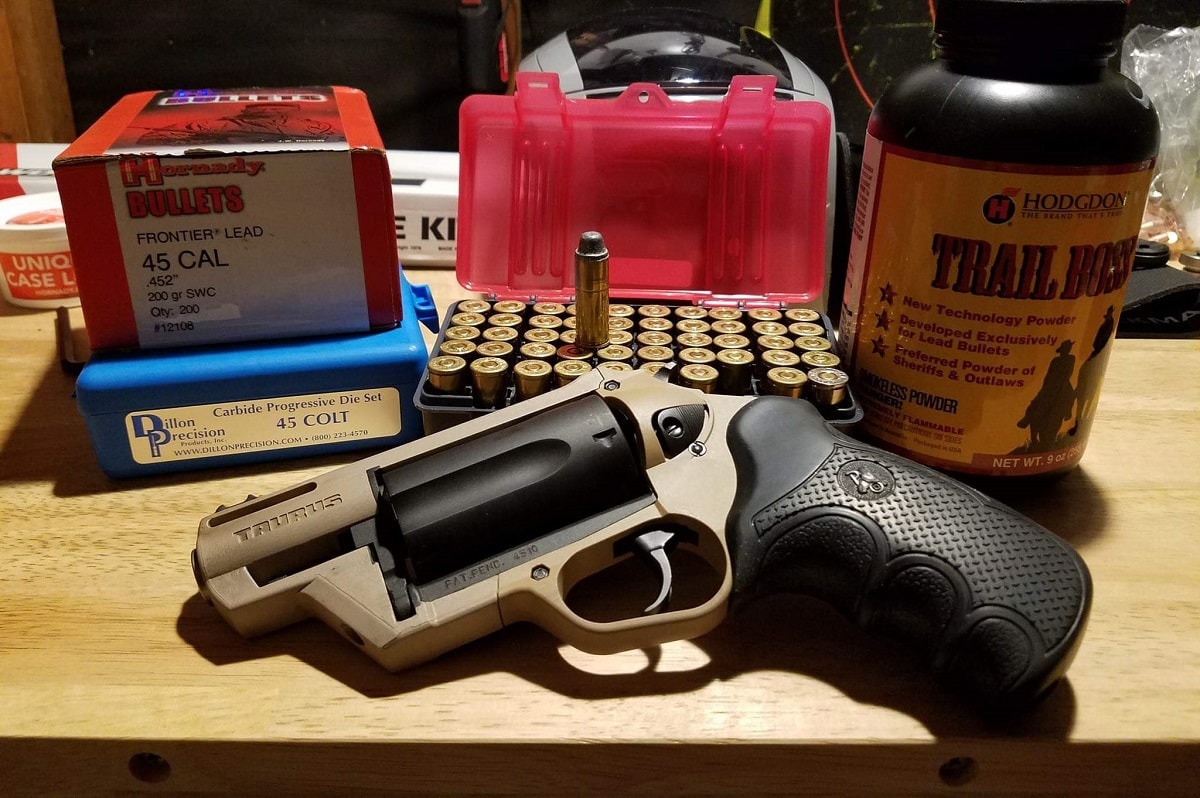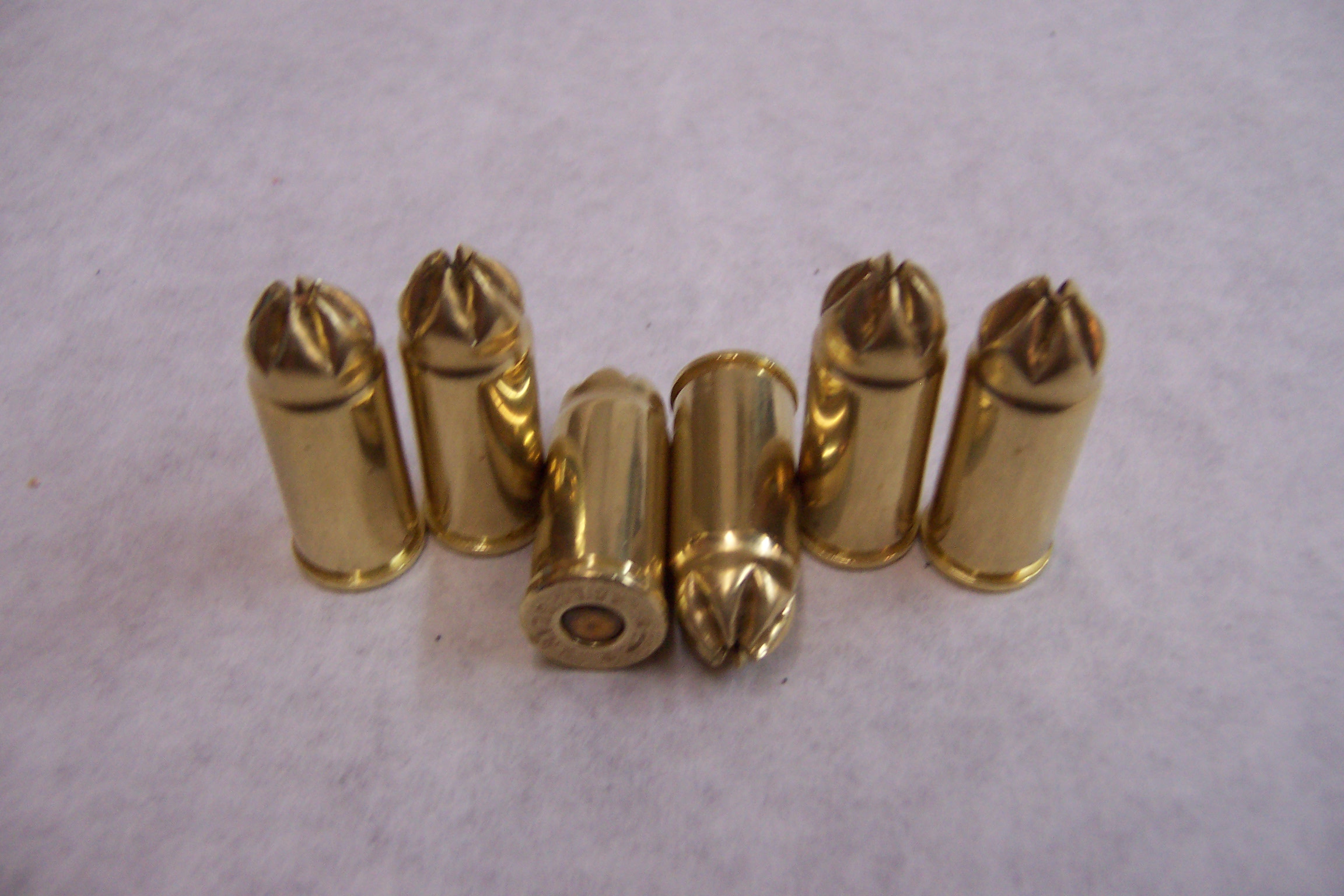.45 Shotgun Shell - For uses of the term "Colt .45" in relation to firearms and non-firearms, including the disambiguation between various pistols and revolvers, see Colt 45.
The .45 Colt (11.43×33mmR) is a straight-frame pistol cartridge manufactured in 1872. It was originally a black powder revolver developed for the Colt Single Action Army Revolver. This case was adopted by the U.S. Army. in 1873 and served as the official pistol case for the U.S. Army. for 14 years.
.45 Shotgun Shell

The Colt .45 is a joint development between Colt's Pat Firearms Manufacturing Company of Hartford, Connecticut, and the Union Metallic Cartridge Company of Bridgeport, Connecticut. 1872. In 1873 the purchase of revolvers was legalized.
Straight Shooter: Our Gun Guy Appraises Your Vintage Firearms • Outdoor Canada
The cartridge is a type of internal lubrication. The rebate heel-type bullet design of its predecessor, the .44 Colt (0.452 to 0.454 inch diameter bullet), has been removed. It replaced the .50-caliber Remington Model 1871 single-shot pistol and various cap-and-ball revolvers converted to use the metal sleeve in use at the time. The Wesson M1875 Army Scofield revolver was approved as a replacement. S&W revolvers use a shorter cartridge, the .45 S&W Schofield, which also works with the Colt, but the Army's S&W Schofield revolvers cannot hold the longer .45 Colt.
Consequently, in 1874 Frankford Arthal (an almost exclusive supplier of small arms ammunition to the US Army) discontinued production of the .45 Colt cartridge in favor of the .45 S&W round. Although this solved the Army's ammunition supply problem, more Colt-Lgth cartridges remained in circulation after production was discontinued. Bette's prime .45 revolver cartridge was later replaced with the "model 1882 ball cartridge for Cal." .45 revolver that uses an external boxer primer and is refillable at the unit level.
The .45 caliber M1882 was officially replaced by the Long Colt .38 in 1892, but remained in production until 1896.
In 1909 the .45 M1909 round was issued with the .45 Colt New Service revolver. This round has never been commercially loaded and is nearly identical to the original .45 Colt round except for having a larger (0.540 in (13.7 mm)) diameter rim. Due to the large rim, Colt rod ejector models could not be loaded into the adjacent bay.
Taurus Judge, 410 Bore, Shotgun Slug, 45 Colt, 20gauge Shotgun, Shotgun Shell, Winchester Repeating Arms Company, Pellet, Caliber, Shot
The .45 Colt remains popular with renewed interest in cowboy action shooting. Additionally, the round returned as cartridges in the metallic silhouette pistol hunting and shooting competitions that began in the 1950s with the introduction of stronger and heavier rimmed pistols. The cartridge's popularity has increased as sales of handguns capable of firing the .410 caliber rifle bullet, such as the Taurus Judge and S&W Governor, are increasing, but it first appeared decades ago with the MIL Thunder 5. The modern .45 Colt bullet has also been modified to have a .451 jacket bullet diameter. inches and a lead bullet diameter of 0.452 inches. The .45 Colt forms the basis for other rounds such as the .454 Casull.
The Colt .45 originally had a black powder case, but modern ammunition uses smokeless powder. The original black powder charge required 40 grains (2.6 g) of black powder in the rear Ogival lead bullet and a 255 grain (16.5 g) flat nose. This load provides a muzzle velocity of 1,050 ft/s (320 m/s). However, this load was too much recoil for the average soldier, and years later it was reduced to just 28 grains of black powder yielding 855 ft/s in Army tests. Problems with the introduction of the S&W Scofield revolver, which featured a short cylinder and quick-loading "top break" frame, meant that suppliers had to supply two different types of .45 caliber pistol ammunition. The problem was further compounded by the fact that the rim of the Schofield cartridge was too wide to fit the adjacent Colt cylinder bay, turning the Colt into a triple shooter if the wrong ammunition was placed in the outpost. So the Army came up with a short, narrow-rimmed sleeve that held only 26 rounds of black powder for use with both revolvers. The load gave about 760 feet per second with a 250-grain bullet from a short-barreled Scofield revolver.
The Colt .45 is known as a surefire fire stopper and horse killer due to its 40 grain black powder power and superior accuracy. At the time of its introduction it was the most widely used cartridge after the Winchester .44-40.

The .45 Colt at the time did not enjoy the advantage the .44-40 had over the Winchester rifle, so the same cartridge could be used in both pistols and rifles.
Long Colt Vs. 45 Acp
Rumors at the time suggested that this was due to the early Colt .45 bullet having a very narrow rim, which caused ejection problems from the chamber. Today, modern Winchesters, Marlins, and other replicas have corrected this omission nearly 50 years after the fact, and the .45 Colt is now available in modern lever-action rifles.
The aforementioned rumor is one of a number of arguments used to explain the lack of chambered rifles in the .45 Colt, whereas the use of .45 Colt cartridges from other manufacturers you may have just refused to allow. hand. Only after Colt's original bearings for the .45 Colt expired were they available on rifles.
However, this does not explain the lack of .45 Colt chambers (or even one of Colt's own cartridges) in the lever-action Colt Burgess or Colt Lightning slide-action rifles. It adds credibility to the rumored underlying problems with Colt's revolver cartridges. (The modern .45 Colt cartridge still has a narrow rim, but features an extraction groove cut into the base of the case. This was a common feature of most modern cartridges, but in the late 19th century it was far from uncommon.)
The US Army .45 Colt round used in the 5.5-inch (140 mm) barrel of the M1909 revolver fires a 250 grain (16 g) bullet with a muzzle velocity of 738 ft/s (225 m/s). , giving it a muzzle energy of 297 ft lbf (403 J).
Set Of Leather Gun Shell Holder Buttstock With Rifle Sling For .308 .30 06, .45 70
Typical factory loads today generate about 400 ft lbf (540 J) of muzzle energy at about 860 ft/s (260 m/s), roughly equivalent to a modern 0.45 ACP load. There's a street cowboy action shooter that gives you a muzzle velocity of around 750 ft/s (230 m/s).
Some handcrafted and manufactured cartridges use custom built revolvers to place this round in the same class as the .44 Magnum.
The weapon is built on a small frame with thin cylinder walls, so it cannot be used with the original Colt Single Action Army or its replicas, such as those manufactured by Uberti, Beretta, Taurus Gaucho, or Ruger New Vaquero. This load is used only in modern large frame revolvers such as the Ruger Blackhawk, Ruger Redhawk, and the original large frame Ruger Vaquero (sometimes called "Old Model" to distinguish it from the "New Vaquero" small frame). need to do it. )

The Thompson Cter Contder "Magnum" .45 Colt load can also be fired safely from a gun chambered for the .454 Casull or .460 S&W Magnum cartridge, although the .454 or .454 or .460 are much shorter. Modern rifles with strong action (such as the Winchester Model 1894, Marlin Model 1894, and recent clones of the Winchester Model 1892) can safely handle heavier loads.
Finest Ammunition E&r Gold, Shotgun Shells In Austria For Sale (11132177)
Colt .45 revolvers produced up to the start of World War II had barrels with a flute diameter of .454 inches. After this, diameters of 0.451 to 0.452 inches were produced. Using a .454 inch diameter bullet with a smaller barrel works, but creates a higher pressure. Cases that use .454 inch bullets may need to be resized to work with the new gun.
Speer's hand loading manual states that the indicated load should only be used with pistols specifically built for modern smokeless powders. No. 10 The Reload Manual states that the intended load does not exceed 15,000 psi. This equals a +P load because the normal pressure for a .45 Colt is 14,000 psi.
In the section entitled "Ruger or Contder Only 45 Colt", Speer mentions speeds of up to 1,300 feet per second with a 200-grain bullet. I am here. This is far beyond the pressure that any modern weapon housed in the .45 Colt can crush, except for the large-frame Ruger Blackhawk, Ruger Redhawk, Freedom Arms Models 83 and 97, and Dan Wesson.
Colt began work on the Single Action Army model 1873 in 1871. The sample cartridge submitted for Army testing was made by UMC using BET CUP primers. Commercial ammunition uses Berdan-type primers, then the more common Boxer
Mm Vs .45 Acp
Shotgun shell wallet, shotgun shell primers, shotgun shell thermos, shotgun shell sling, shotgun shell lights, shotgun shell trip alarm, leather shotgun shell pouch, shotgun shell vest, shotgun shell pouch, shotgun shell shot glasses, shotgun shell holster, shotgun shell urn
0 Comments